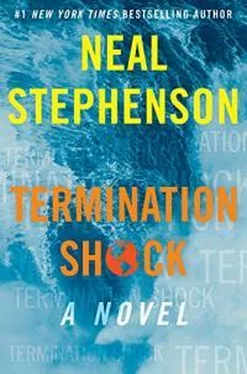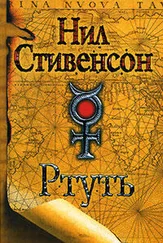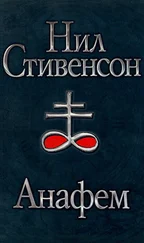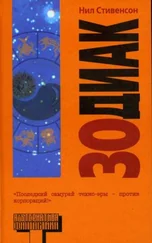The Sutlej, by contrast, meandered across flat territory, absolute Breadbasket land, not as spectacular as Kashmir until you got your head around the sheer amount of food being produced in the green fields that the river watered. Then it was as impressive in its way as mountains. Apparently a lot of other people down through the centuries had shared the same view, for the area he happened to visit, around Ferozpur, was speckled with battle memorials.
He ended up in Chandigarh, which was a very different place from Amritsar. Both were cities of a little more than a million souls, but from that point the resemblances tapered off in a hurry. Chandigarh was a new, planned city that had been plunked down by government mandate post-1947, whereas Amritsar was so old that people there claimed, with apparent sincerity, that it had been founded by gods. While there were definitely a lot of Sikhs in Chandigarh, they were outnumbered six to one by Hindus.
Not that this statistic really mattered in Laks’s daily life once he had found a rooming house and a gurdwara, both close enough to his new akhara that running between them was often faster than dealing with vehicles. Like everything else here, the akhara was new. They wrestled on foam mats and used weight machines. There were showers. Joris and gadas were certainly available for those who were hip to them. In the adjacent sports complex, laid out by the city’s benevolent planners, were green fields where training could happen in the open. The mission of this akhara seemed a little different; they were somewhat self-consciously making an effort to inculcate youngsters in traditional ways, whereas the guys at the akhara in Amritsar were just doing it because they had always done it. Those guys didn’t have a mission statement. People showed up, or they didn’t. Here, though, the kids were sent . A lot of them were delivered to the place along Chandigarh’s modern, rationally designed street plan, by the local equivalent of soccer moms or even by paid drivers. The akhara was providing a service. Oh, not in some shitty hucksterish way. Not at all. These guys couldn’t have been more pure, more sincere. It was just a little different.
Anyway, they didn’t really know what to do with Laks either. It didn’t help that he was, to be honest, practicing a somewhat impure form of the art. It turned out that there were a lot of other people in the world besides Punjabis who knew a thing or two about fighting with the ancient and ubiquitous weapon known as the stick. Growing up in Richmond he’d had access to schools of Filipino and Malaysian martial arts up in Vancouver as well as down across the border in Seattle. So mixed in with his traditional gatka moves—which he knew how to do very well—were foreign bits. Improvements or impurities depending on your point of view. Styles of movement that looked inscrutable, or just wrong, in the akhara.
The characteristic movements of gatka were gracile. Hopping and twirling that sometimes caused Westerners to misconstrue it as mere sword dance—an artistic endeavor that might have been derived from martial roots but was now far removed from anything that would work in practice. In fact those movements all made perfect martial sense when you were on uneven ground, outnumbered, and engulfed in murderous opponents—which in a broader Sikh history context was pretty much all the time. Not just Alexander’s Macedonians but Persians, Afghans, Pathans, Baluchis, Mughals, Gurkhas, Rajputs, Marathas, and British at one time or another had attempted to seize control of the Breadbasket. The list of tortures used to put prisoners of war to death was long and incredibly imaginative. So constantly moving around to see who was coming up behind you—considered a bad idea in some martial arts—made sense here.
All well and good. But what Laks had added was some additional biomechanics that had to do with landing powerful blows without big movements and obvious windups. Better suited, perhaps, for moments when the wild melee had resolved to one-on-one combat. Any martial artist of any size could amplify what physical power nature had given them by using these techniques. But when Laks had used them at full power against practice targets in Amritsar, the senior guys at the akhara had got a certain look on their faces that he had enjoyed seeing at the time, but that in retrospect was them making up their minds that the big weird Canadian had to leave.
This new akhara was a legit business. They had a logo. Because of the visa situation, they could not employ him in any capacity. Nor would it really have been ethical for Laks to accept employment of any sort. Even unloading sacks of potatoes at a langar could be seen as taking work away from people who needed it more than he did. To this was now added the possibility of landing an employer in hot water legally. The bracelet that Laks wore on his wrist was a constant reminder to do no wrong with his strong right arm, or any other part of his body for that matter. His uncle Dharmender had once explicitly stated—just in case this point had eluded him—that this included his penis. So far, he had remained chaste while in India, both because of that memorable conversation (it had happened while Uncle Dharmender was changing the brake pads in a Subaru) and because getting involved with a local girl could have incalculable consequences that were likely to be all or mostly bad.
So Laks was allowed to hang around and work out at the akhara, but he was a man apart except when he was training with Ranjit, that being the “old” (he was maybe fifty-five) stick master who had agreed to work with him. They would go off to an out-of-the-way part of the adjoining field and train.
There was nothing precisely wrong with that, but it was anticlimactic in the sense that Ranjit told Laks after a couple of weeks that he had no special advanced techniques to teach him that would turn Laks into some exalted master. It was stick fighting. There wasn’t that much to say about it. “It’s like running,” he said. “You can learn a few tricks that will make you run faster but basically you just have to run.” Laks, Ranjit said, already knew enough that he could fly home and hang out a shingle in Richmond, or any other place with a large Sikh population, and operate a totally legitimate school. Was that what he wanted? Was that why he had come all this way? Done.
In fact, that idea had never crossed Laks’s mind, and so he had to think about it. But perhaps it was already obvious to Ranjit, from the look on Laks’s face, that hanging out a shingle in Canada was not the objective here.
Ranjit then got a clouded look on his face that Laks thought he had seen once or twice before in Amritsar. He could guess what it was.
Laks was a Canadian who had made the choice to leave Vancouver’s affluence behind and return to the Punjab and get in touch with his roots. Fine. He’d overstayed his visa. A little troubling, but it could be overlooked as youthful enthusiasm. Now he had failed to rise to the bait of going home in triumph and becoming a suburban martial arts instructor. What, then, did this stranger really want?
Decades ago, Vancouver had been the base of operations of a cell of Sikh separatists who had wanted to pull West and East Punjab out of Pakistan and India and form an independent country called Khalistan. Long before Laks had been born, they had perfected a time bomb in the wilderness outside the city and then used it to blow up a 747 full of passengers. Since then the group had gone into eclipse as its support base in the community (to the extent that that even existed) had dried up and it had been hammered by anti-terrorist authorities in India and many other countries. The Russians had used a disinformation scheme to trick the Indian government into believing that the Sikhs were getting support from Pakistan and the CIA. Those had been bad times.
Читать дальше

![Нил Стивенсон - Криптономикон [litres]](/books/23868/nil-stivenson-kriptonomikon-litres-thumb.webp)







![Нил Стивенсон - Лавина [litres с оптимизированной обложкой]](/books/414066/nil-stivenson-lavina-litres-s-optimizirovannoj-ob-thumb.webp)
